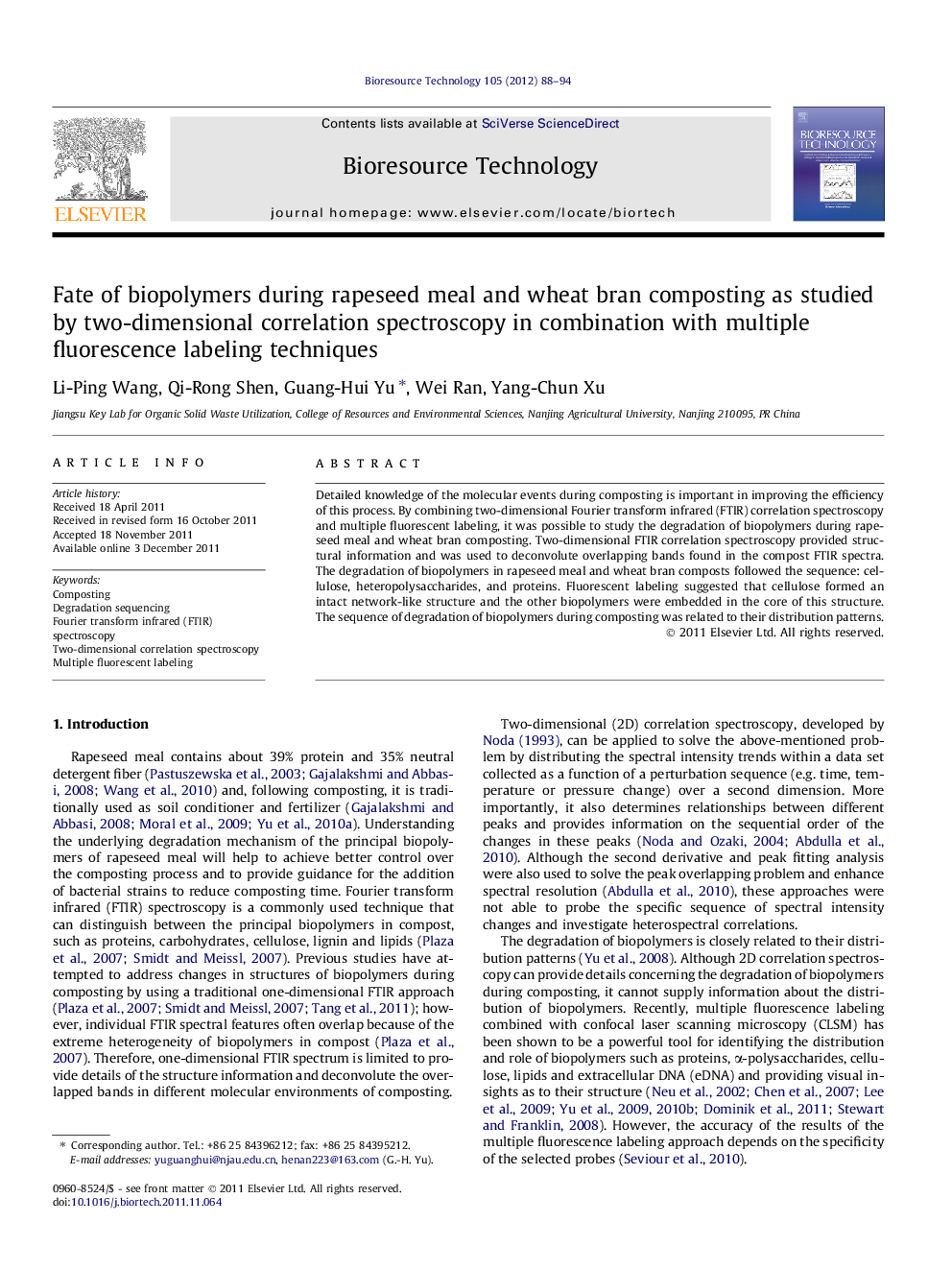| Article ID | Journal | Published Year | Pages | File Type |
|---|---|---|---|---|
| 681592 | Bioresource Technology | 2012 | 7 Pages |
Detailed knowledge of the molecular events during composting is important in improving the efficiency of this process. By combining two-dimensional Fourier transform infrared (FTIR) correlation spectroscopy and multiple fluorescent labeling, it was possible to study the degradation of biopolymers during rapeseed meal and wheat bran composting. Two-dimensional FTIR correlation spectroscopy provided structural information and was used to deconvolute overlapping bands found in the compost FTIR spectra. The degradation of biopolymers in rapeseed meal and wheat bran composts followed the sequence: cellulose, heteropolysaccharides, and proteins. Fluorescent labeling suggested that cellulose formed an intact network-like structure and the other biopolymers were embedded in the core of this structure. The sequence of degradation of biopolymers during composting was related to their distribution patterns.
Graphical abstractFigure optionsDownload full-size imageDownload as PowerPoint slideHighlights► Knowledge of the molecular events during composting is important for this process. ► 2D correlation spectroscopy can characterize the fate of biopolymers of compost. ► 2D correlation spectroscopy solves the peak overlapping problem and enhances spectral resolution. ► Cellulose from rapeseed meal formed a network-like structure with the other biopolymers embedded in it. ► Multiple fluorescence labeling supplies in situ information about the distribution of biopolymers.
